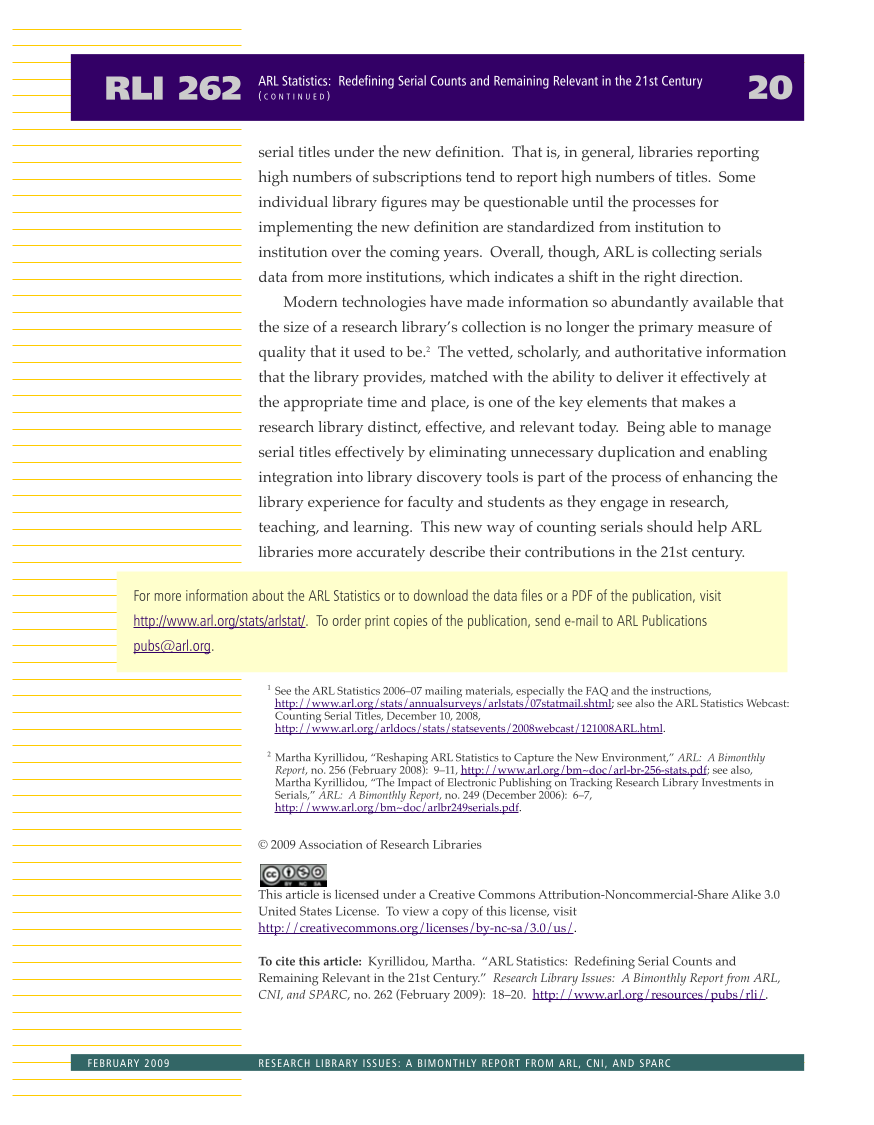serial titles under the new definition. That is, in general, libraries reporting high numbers of subscriptions tend to report high numbers of titles. Some individual library figures may be questionable until the processes for implementing the new definition are standardized from institution to institution over the coming years. Overall, though, ARL is collecting serials data from more institutions, which indicates a shift in the right direction. Modern technologies have made information so abundantly available that the size of a research library’s collection is no longer the primary measure of quality that it used to be.2 The vetted, scholarly, and authoritative information that the library provides, matched with the ability to deliver it effectively at the appropriate time and place, is one of the key elements that makes a research library distinct, effective, and relevant today. Being able to manage serial titles effectively by eliminating unnecessary duplication and enabling integration into library discovery tools is part of the process of enhancing the library experience for faculty and students as they engage in research, teaching, and learning. This new way of counting serials should help ARL libraries more accurately describe their contributions in the 21st century. 1 See the ARL Statistics 2006–07 mailing materials, especially the FAQ and the instructions, http://www.arl.org/stats/annualsurveys/arlstats/07statmail.shtml see also the ARL Statistics Webcast: Counting Serial Titles, December 10, 2008, http://www.arl.org/arldocs/stats/statsevents/2008webcast/121008ARL.html. 2 Martha Kyrillidou, “Reshaping ARL Statistics to Capture the New Environment,” ARL: A Bimonthly Report, no. 256 (February 2008): 9–11, http://www.arl.org/bm~doc/arl-br-256-stats.pdf see also, Martha Kyrillidou, “The Impact of Electronic Publishing on Tracking Research Library Investments in Serials,” ARL: A Bimonthly Report, no. 249 (December 2006): 6–7, http://www.arl.org/bm~doc/arlbr249serials.pdf. © 2009 Association of Research Libraries This article is licensed under a Creative Commons Attribution-Noncommercial-Share Alike 3.0 United States License. To view a copy of this license, visit http://creativecommons.org/licenses/by-nc-sa/3.0/us/. To cite this article: Kyrillidou, Martha. “ARL Statistics: Redefining Serial Counts and Remaining Relevant in the 21st Century.” Research Library Issues: A Bimonthly Report from ARL, CNI, and SPARC, no. 262 (February 2009): 18–20. http://www.arl.org/resources/pubs/rli/. RLI 262 20 ARL Statistics: Redefining Serial Counts and Remaining Relevant in the 21st Century ( C O N T I N U E D ) FEBRUARY 2009 RESEARCH LIBRARY ISSUES: A BIMONTHLY REPORT FROM ARL, CNI, AND SPARC For more information about the ARL Statistics or to download the data files or a PDF of the publication, visit http://www.arl.org/stats/arlstat/. To order print copies of the publication, send e-mail to ARL Publications pubs@arl.org.























